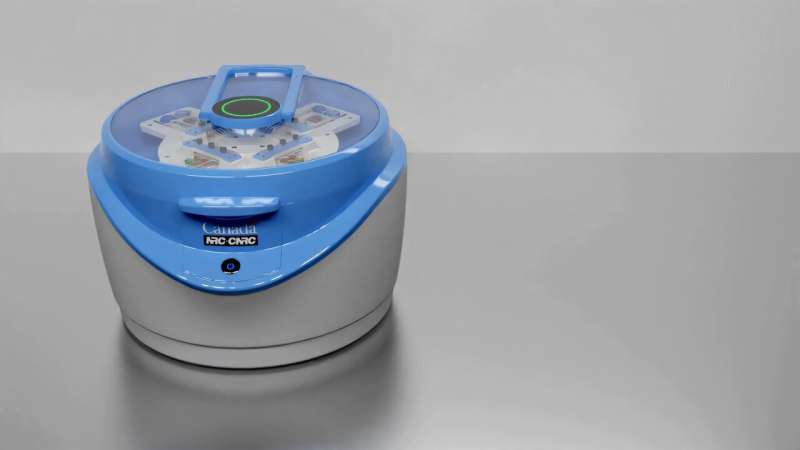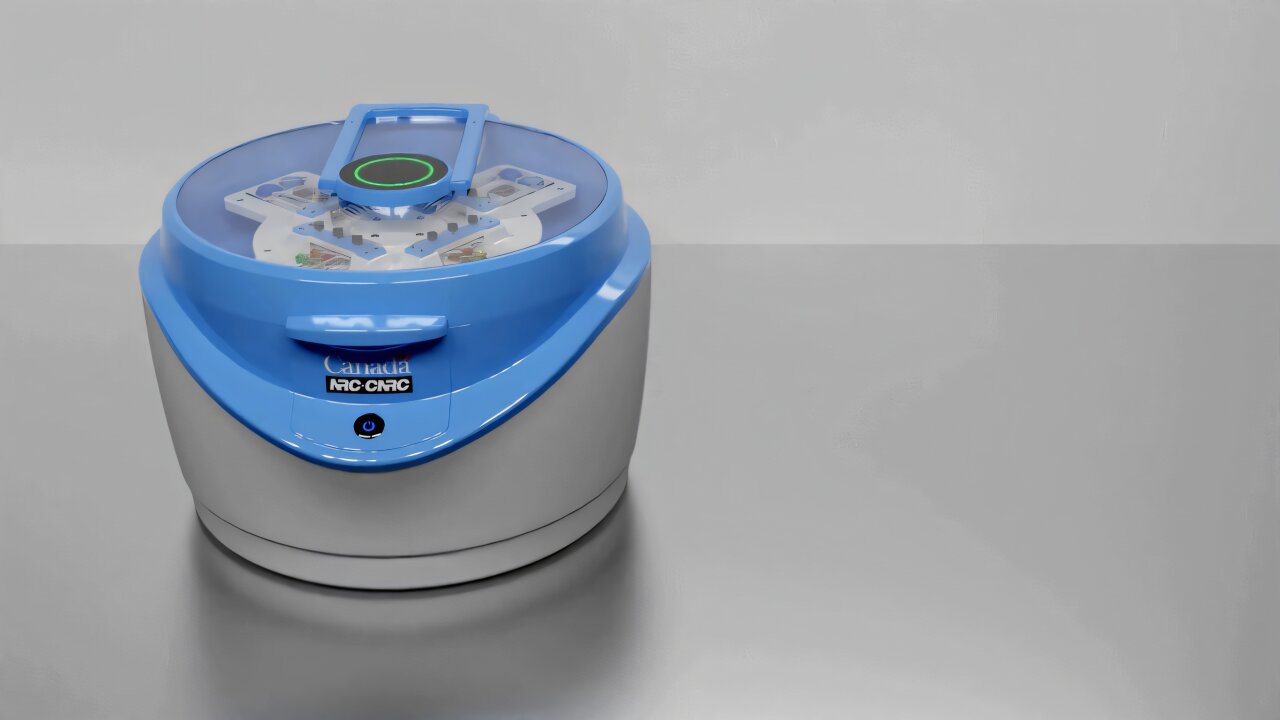
PowerBlade is a portable device that uses a drop of blood and an automated sequence of steps to efficiently detect sepsis. Credit: NRC.
Canadian scientists have developed a blood test and portable device that can determine the onset of sepsis faster and more accurately than existing methods.
Published today in Nature Communications, the test is more than 90% accurate at identifying those at high risk of developing sepsis and represents a major milestone in the way doctors will evaluate and treat sepsis.
“Sepsis accounts for roughly 20% of all global deaths,” said senior author Dr. Claudia dos Santos, a critical care physician and scientist at St. Michael’s Hospital. “Our test could be a powerful game changer, allowing physicians to quickly identify and treat patients before they begin to rapidly deteriorate.”
Sepsis is the body’s extreme reaction to an infection, causing the immune system to start attacking one’s own organs and tissues. It can lead to organ failure and death if not treated quickly. Predicting sepsis is difficult: early symptoms are non-specific, and current tests can take up to 18 hours and require specialized labs. This delay before treatment increases the chance of death by nearly eight percent per hour.
AI helps predict sepsis
Examining blood samples from more than 3,000 hospital patients with suspected sepsis, researchers from UBC and Sepset, a UBC spin-off biotechnology company, used machine learning to identify a six-gene expression signature “Sepset” that predicted sepsis 9 times out of 10, and well before a formal diagnosis.
With 248 additional blood samples using RT-PCR, (Reverse Transcription Polymerase Chain Reaction), a common hospital laboratory technique, the test was 94% accurate in detecting early-stage sepsis in patients whose condition was about to worsen.
“This demonstrates the immense value of AI in analyzing extremely complex data to identify the important genes for predicting sepsis and writing an algorithm that predicts sepsis risk with high accuracy,” said co-author Dr. Bob Hancock, UBC professor of microbiology and immunology and CEO of Sepset.
Bringing the test to point of care
To bring the test closer to the bedside, the National Research Council of Canada (NRC) developed a portable device they called PowerBlade that uses a drop of blood and an automated sequence of steps to efficiently detect sepsis. Tested with 30 patients, the device was 92% accurate in identifying patients at high risk of sepsis and 89% accurate in ruling out those not at risk.
“PowerBlade delivered results in under three hours. Such a device can make treatment possible wherever a patient may be, including in the emergency room or remote health care units,” said Dr. Hancock.
“By combining cutting-edge microfluidic research with interdisciplinary collaboration across engineering, biology, and medicine, the Center for Research and Applications in Fluidic Technologies (CRAFT) enables rapid, portable, and accessible testing solutions,” said co-author Dr. Teodor Veres, of the NRC’s Medical Devices Research Center and CRAFT co-director.
CRAFT, a joint venture between the University of Toronto, Unity Health Toronto and the NRC, accelerates the development of innovative devices that can bring high-quality diagnostics to the point of care.
Dr. Hancock’s team, including UBC research associate and co-author Dr. Evan Haney, has also started commercial development of the Sepset signature. “These tests detect the early warnings of sepsis, allowing physicians to act quickly to treat the patient, rather than waiting until the damage is done,” said Dr. Haney.
More information:
Lidija Malic et al, A machine learning and centrifugal microfluidics platform for bedside prediction of sepsis, Nature Communications (2025). DOI: 10.1038/s41467-025-59227-x
Provided by
University of British Columbia
Citation:
Rapid bedside test predicts sepsis with more than 90% accuracy (2025, May 27)
retrieved 31 May 2025
from https://medicalxpress.com/news/2025-05-rapid-bedside-sepsis-accuracy.html
This document is subject to copyright. Apart from any fair dealing for the purpose of private study or research, no
part may be reproduced without the written permission. The content is provided for information purposes only.
